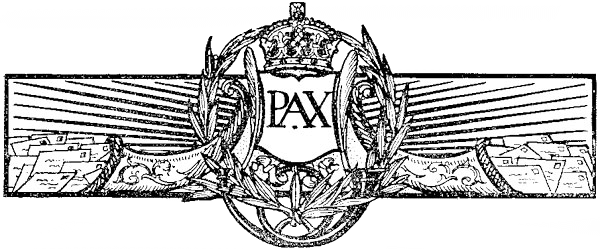Roman Provincias > Provincia Dacia
Provincia Dacia

Background
Roman Dacia (also Dacia Traiana and Dacia Felix) was a province of the Roman Empire from 106 to 274–275 AD. Its territory consisted of eastern and south-eastern Transylvania, the Banat, and Oltenia (regions of modern Romania). It was from the very beginning organized as an imperial province and remained so throughout the Roman occupation. Historians' estimates of the population of Roman Dacia range from 650,000 to 1,200,000.
The conquest of Dacia was completed by Emperor Trajan (98–117) after two major campaigns against Decebalus' Dacian kingdom. The Romans did not occupy the entirety of the old Dacian kingdom, as the greater part of Moldavia, together with Maramureș and Crișana, was ruled by Free Dacians even after the Roman conquest. In 119, the Roman province was divided into two departments: Dacia Superior (Upper Dacia) and Dacia Inferior (Lower Dacia) (later named Dacia Malvensis). In 124 (or around 158), Dacia Superior was divided into two provinces: Dacia Apulensis and Dacia Porolissensis. During the Marcomannic Wars the military and judicial administration was unified under the command of one governor, with another two senators (the legati legionis) as his subordinates; the province was called tres Daciae (Three Dacias) or simply Dacia.
The Roman authorities undertook a massive and organized colonization of Dacia. New mines were opened and ore extraction intensified, while agriculture, stock breeding, and commerce flourished in the province. Dacia began to supply grain not only to the military personnel stationed in the province but also to the rest of the Balkan area. It became an urban province, with about 10 cities known, 8 of which held the highest rank of colonia, though the number of cities was fewer than in the region's other provinces. All the cities developed from old military camps. Ulpia Traiana Sarmizegetusa, the seat of the imperial procurator (finance officer) for all the three subdivisions was the financial, religious, and legislative center of the province. Apulum, where the military governor of the three subdivisions had his headquarters, was not simply the greatest city within the province, but one of the biggest across the whole Danubian frontier.
There were military and political threats from the beginning of Roman Dacia's existence. Free Dacians who bordered the province were the first adversary, who, after allying themselves with the Sarmatians, hammered the province during the reign of Marcus Aurelius. Following a calmer period covering the reigns of Commodus through to Caracalla (180–217 AD), the province was once again beset by invaders, this time the Carpi, a Dacian tribe in league with the newly arrived Goths, who in time became a serious difficulty for the empire. Finding it increasingly difficult to retain Dacia, the emperors were forced to abandon the province by the 270s, making it the first of Rome's long-term possessions to be abandoned.[2] Dacia was devastated by the Germanic tribes (Goths, Taifali, Bastarns) together with the Carpi in 248–250, by the Carpi and Goths in 258 and 263, and by the Goths and Heruli in 267 and 269.[3][4] Ancient sources implied that Dacia was virtually lost during the reign of Gallienus (253–268), but they also report that it was Aurelian (270–275) who relinquished Dacia Traiana. He evacuated his troops and civilian administration from Dacia, and founded Dacia Aureliana with its capital at Serdica in Lower Moesia.
The fate of the Romanized population of the former province of Dacia Traiana has become subject of spirited controversy. One theory holds that the Latin language spoken in ancient Dacia, where Romania was to be formed in the future, gradually turned into Romanian; in parallel, a new people—the Romanians—were formed from the Daco-Romans (the Romanized population of Dacia Traiana). The opposing theory argues that the Romanians descended from the Romanized population of the Roman provinces of the Balkan Peninsula.
Major Settlements
When considering provincial settlement patterns, the Romanized parts of Dacia were composed of urban satus settlements, made up of coloniae, municipia, and rural settlements, principally villas with their associated latifundia and villages (vici).[165] The two principal towns of Roman Dacia, Ulpia Traiana Sarmizegetusa and Apulum, are on par with similar towns across the western empire in terms of socio-economic and architectural maturity.
Roman Provincias
Roman Provincias List
- Provincia Achaea
- Provincia Aegypti
- Provincia Africa Proconsularis
- Provincia Cottiae
- Provincia Maritimae
- Provincia Alpes Poeninae
- Provincia Arabia Petraea
- Provincia Armenia
- Provincia Asia
- Provincia Assyria
- Provincia Augustamnica
- Provincia Bithynia et Pontus
- Provincia Britannia Inferior
- Provincia Britannia Superior
- Provincia Britannia
- Provincia Byzacena
- Provincia Cappadocia
- Provincia Cilicia
- Provincia Corsica et Sardinia
- Provincia Crete et Cyrenaica
- Provincia Cyprus
- Provincia Dacia Aureliana
- Provincia Dacia
- Provincia Dalmatia
- Provincia Galatia
- Provincia Gallia Aquitania
- Provincia Gallia Belgica
- Provincia Gallia Lugdunensis
- Provincia Gallia Narbonensis
- Provincia Germania
- Provincia Germania Inferior
- Provincia Germania Superior
- Provincia Hispania
- Provincia Hispania Baetica
- Provincia Hispania Citerior
- Provincia Hispania Lusitania
- Provincia Hispania Tarraconensis
- Provincia Hispania Ulterior
- Provincia Iudaea
- Provincia Lycia et Pamphylia
- Provincia Macedoniae
- Provincia Mauretania
- Provincia Mauretania Caesariensis
- Provincia Mauretania Tingitana
- Provincia Mesopotamia
- Provincia Moesia
- Provincia Moesia Inferior
- Provincia Moesia Superior
- Provincia Pannonia
- Provincia Pannonia Inferior
- Provincia Pannonia Superior
- Provincia Pannonia Valeria
- Provincia Raetia
- Provincia Sicilia
- Provincia Sophene
- Provincia Syria
- Provincia Syria Palaestina
- Provincia Syria Phoenice
- Provincia Thracia